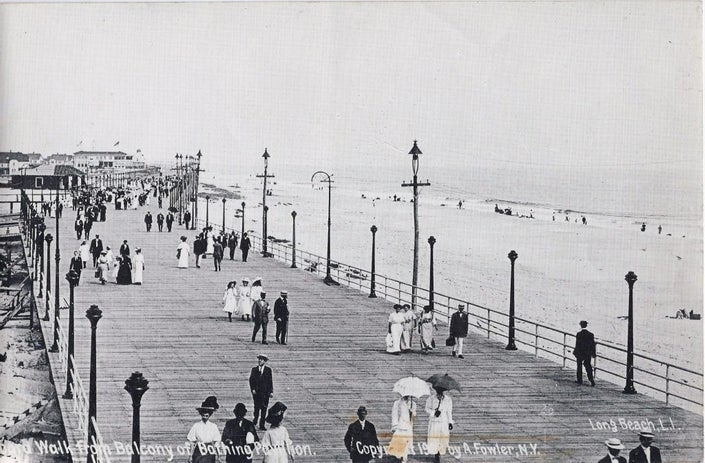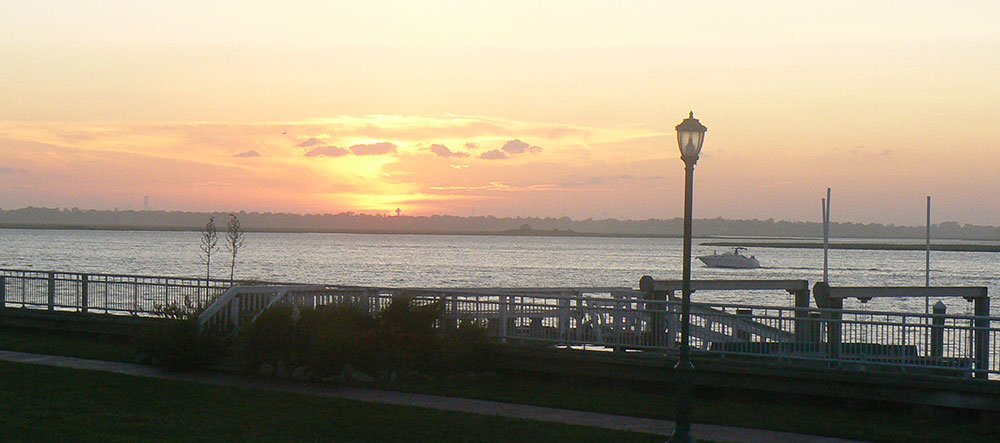Our History
Long Beach, NY is one of the older, more established communities on Long Island. Founded in 1880, when the first Long Beach Hotel was built, it continued to grow at a steady pace. The railroad arrived in 1882, promoting Long Beach as a resort community for vacationers.
The primary attraction in its development was the fact that Long Beach is an oceanfront Island along with Long Island’s south shore, which has a moderating effect on its climate. Long Beach averages 10 degrees warmer in the winter and 10 degrees cooler in the summer than inland communities on Long Island and New York City. With the ocean on one side and the bay on the other, Long Beach developed as a seaside community. Senator William H. Reynolds played a significant role in the development of Long Beach, NY. More information about Senator William H. Reynolds can be found in this article.

By the beach, on the oceanfront, there is a two ¼ mile-long boardwalk, which was built in 1914 with the help of some elephants. All year long both in winter and summer, one can find strollers, joggers, and bicycle riders. A section of the boardwalk is set aside as a bicycle lane, and the recent interest in physical fitness has resulted in increased use of the lighted boardwalk both during the day and at night. The adjacent beach is a 3.5 mile stretch of pure white sand open to the public year-round with daily and seasonal rates during the summer — call (516) 431-3890 for information.
The City of Long Beach is one of only two cities on Long Island. Glen Cove, on the north shore, is the other. Although geographically within the Town of Hempstead located in Nassau County, Long Beach is politically independent and self-governing. The governing body consists of a five-member City Council elected every two years, which appoints a City Manager. Long Beach also elects a Legislator every four years to represent the city on the six-member Nassau County’s legislative body.
The City of Long Beach currently has a population of about 37,000 persons, and about 15,000 households spread across two square miles of land surrounded by water. Over 4,000 children attend Long Beach schools. Its two major downtown shopping areas along Park Avenue and West Beech Street are a hub of activity supported by the robust Long Beach Chamber of Commerce, in existence for over six decades.

The bayside of the community is lined with homes and private docks. Waterfront homes can also be found in an area called the Canals. Hand-dug extensions were created when canals were dug connecting areas of Long Beach to the bay. No home is more than a few hundred yards from the water as Long Beach is only ½ mile wide at its widest point.
In terms of housing, Long Beach offers one of the most extensive ranges of living styles on Long Island. New condominiums, which include all kinds of self-contained recreational facilities, are springing up along a portion of the oceanfront. New homes embodying the latest architectural designs can be seen along with the older gracious dwellings, which were built in 1930. Older smaller homes are also to be found throughout the island, which once was seasonal summer homes, but now serve as year-round residences. Much of Long Beach is going through revitalization and redevelopment. Part of the downtown commercial shopping area along West Park Avenue recently underwent a beautiful facelift, including restoration of the historic train station and the addition of several new shops. Long Beach is also going through somewhat of a housing boom as older buildings are being replaced or recycled into new modern residences both along the shore and throughout the inland parts of the City.
Our Mission
The mission of the Long Beach Chamber of Commerce is to promote the businesses that add value to our community while fostering a beneficial relationship with the community and help improve the overall quality of life in the City of Long Beach and surrounding communities.
The Chamber does not carry all this work alone but often works closely with other organizations and public officials. It aims to help all members of the business community--firms and individuals alike.
In some cases, the Chamber works with the city and county government, such as in industrial, public relations, and development programs. But the benefits to such bodies from such working together are legion: The know-how of the Chamber and its available workforce and facilities designed especially for such type of work can sometimes do a specialized job that the city and county cannot.
